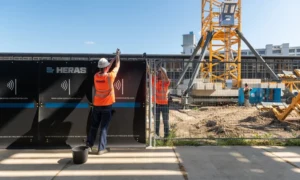Introduction:
In the ever-evolving landscape of organizational efficiency, the need for innovative storage solutions has become paramount. One such groundbreaking technology that is transforming the way we manage physical documents is the File Compactor Storage System. This blog explores the evolution of traditional filing systems, the challenges they pose, and how the implementation of file compactor storage systems is revolutionizing space utilization, accessibility, and overall document management in modern workplaces.
The Evolution of Filing Systems:
Traditional Filing Cabinets:
Historically, offices have relied on traditional filing cabinets to store vast amounts of paperwork. While these cabinets served their purpose, they came with inherent challenges that hindered organizational efficiency:
- Space Inefficiency: Traditional filing cabinets occupy a significant amount of floor space, limiting the capacity for additional workstations or collaborative areas within the office.
- Limited Accessibility: Retrieving documents from deep within a file cabinet can be time-consuming and disrupt the workflow. Traditional filing systems often lack the accessibility needed in fast-paced work environments.
- Organizational Challenges: As the volume of paperwork grows, maintaining an organized and easily navigable filing system becomes increasingly difficult. Misplacement of documents, duplication, and inefficiencies in retrieval become common issues.
Transition to Compact Storage:
Recognizing the inefficiencies of traditional filing systems, organizations began transitioning to more space-conscious storage solutions. Compact storage systems marked a significant improvement, offering movable shelves that could be condensed or expanded based on the user’s needs.
- Maximizing Space Utilization: Compact storage systems allowed for better space utilization by minimizing the footprint of traditional filing cabinets. Shelves could be condensed to create space when not in use and expanded when needed.
- Improved Accessibility: The mobility of shelves in compact storage systems enhanced accessibility. However, challenges persisted, particularly when it came to efficiently managing large volumes of documents.
The File Compactor Storage System: A Technological Leap:
Enter the File Compactor Storage System, a technological leap that addresses the shortcomings of traditional filing systems and even improves upon previous compact storage solutions. This system leverages cutting-edge technology to provide unparalleled efficiency in space utilization, accessibility, and document organization.
Key Features of the File Compactor Storage System:
- High-Density Storage: The file compactor system is designed for high-density storage, allowing organizations to store a vast number of documents in a fraction of the space required by traditional filing cabinets.
- Motorized Mobile Shelving: Unlike manual compact storage systems, file compactors feature motorized mobile shelving. This automation not only enhances efficiency but also reduces the physical effort required to move shelves.
- Smart Control Systems: File compactor systems are equipped with smart control systems that enable users to effortlessly move shelves with the touch of a button. This automation ensures precise positioning of shelves, minimizing the risk of errors in storage and retrieval.
- Space Optimization Algorithms: Advanced algorithms are employed to optimize the placement of shelves, taking into account the frequency of document retrieval and the overall organization of the filing system. This results in a dynamic and space-efficient storage solution.
- Security Features: File compactor systems often come with enhanced security features, including access control and audit trails. These features ensure that sensitive documents are only accessed by authorized personnel, enhancing data security.
Advantages of File Compactor Storage Systems:
- Space Efficiency: The primary advantage of file compactor storage systems is their unparalleled space efficiency. Organizations can significantly reduce the physical footprint dedicated to document storage, freeing up valuable space for other purposes.
- Improved Accessibility: With motorized mobile shelving and smart control systems, file compactors provide swift and easy access to stored documents. This is crucial in environments where quick retrieval of information is essential for day-to-day operations.
- Organization and Order: The automation and optimization features of file compactor systems contribute to better organization and orderliness in document storage. This minimizes the chances of misplacement, duplication, and other organizational challenges associated with traditional filing systems.
- Cost Savings: While the initial investment in a file compactor system may be higher than traditional filing cabinets, the long-term cost savings are significant. Organizations can make more efficient use of their existing space, potentially avoiding the need for costly office expansions.
- Environmental Sustainability: Reducing the amount of physical space dedicated to document storage aligns with environmental sustainability goals. File compactor systems contribute to a more eco-friendly workplace by minimizing the need for additional construction and resource consumption.
Implementing File Compactor Systems in Different Industries:
1. Healthcare:
In the healthcare sector, where patient records and administrative paperwork are abundant, file compactor storage systems streamline document management. The high-density storage capability ensures that medical facilities can maintain comprehensive records without compromising on space.
2. Legal:
Law firms deal with extensive paperwork, from legal documents to case files. File compactor systems enhance the efficiency of document retrieval, enabling legal professionals to access critical information swiftly.
3. Corporate:
Large corporations dealing with voluminous paperwork, employee records, and administrative documents benefit from the space optimization provided by file compactor systems. These systems contribute to a more organized and streamlined workplace.
4. Education:
Educational institutions, with their extensive student records, administrative paperwork, and research documents, can benefit from the high-density storage and accessibility features of file compactor systems.

Case Studies: Success Stories of File Compactor Implementations
1. XYZ Corporation:
XYZ Corporation, a multinational company facing challenges with limited office space, implemented a file compactor storage system. The move not only allowed the corporation to optimize existing space but also contributed to improved workflow and document retrieval efficiency.
2. City Hospital:
City Hospital, grappling with the exponential growth of patient records, transitioned to a file compactor storage system. The high-density storage capabilities not only accommodated the increasing volume of records but also facilitated faster access to patient information for healthcare professionals.
3. ABC Law Firm:
ABC Law Firm, dealing with extensive legal documentation, adopted a file compactor storage system to enhance document organization and accessibility. The system’s smart control features allowed legal professionals to retrieve case files efficiently, improving overall productivity.
The Future of File Compactor Storage Systems:
As technology continues to advance, the future of file compactor storage systems holds exciting possibilities. Predictions for the evolution of these systems include:
- Integration with Cloud Storage: File compactor systems may integrate with cloud storage solutions, allowing organizations to seamlessly manage both physical and digital documents. This integration enhances accessibility and data security.
- Enhanced Automation: The automation features of file compactor systems may see further advancements, incorporating artificial intelligence (AI) for predictive shelving optimization and even more intuitive control systems.
- Customization for Specific Industries: Future iterations of file compactor systems may offer industry-specific customization, catering to the unique needs of healthcare, legal, corporate, and other sectors.
- Sustainability Innovations: Environmental sustainability is likely to be a key focus, with file compactor systems incorporating eco-friendly materials and energy-efficient technologies.
- Advanced Security Measures: Security features may evolve to include biometric access controls and blockchain technology, ensuring the utmost confidentiality and integrity of stored documents.
Conclusion: Redefining Efficiency with File Compactor Storage Systems
In the dynamic landscape of organizational management, the file compactor storage system stands as a testament to the transformative power of technology in optimizing space and improving workflow. From its humble beginnings as an evolution of traditional filing systems to its current state-of-the-art implementations, the file compactor system has become an indispensable tool for organizations seeking to maximize efficiency and sustainability.
As we look toward the future, the continued innovation in file compactor technology holds the promise of even greater advancements. The integration of smart features, customization for specific industries, and a commitment to environmental sustainability position file compactor storage systems as key players in the ongoing evolution of modern workplaces. Through these innovations, organizations can redefine efficiency, streamline document management, and create workspaces that embrace the full potential of technology in optimizing physical and digital realms.
Also Read – Revolutionizing Space: The File Compactor Storage System






























